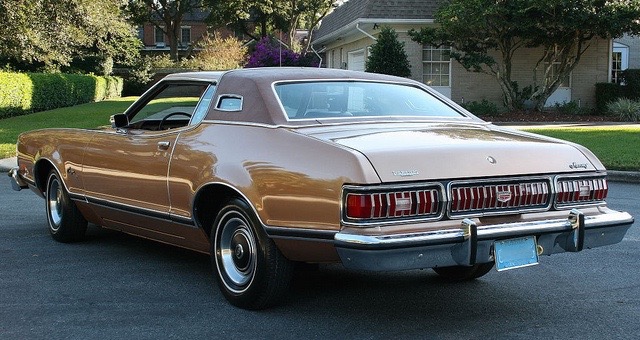Auto industry insider and commentator Peter De Lorenzo reported on the Detroit show here, mentioning the new Continental. De Lorenzo compares marketing strategies of Cadillac and Lincoln there and in other posts on his web site. He points out that Cadillac's strategy has been to produce performance cars in the mold of BMW, Audi and Mercedes and naming them using short codes such as CTS, XTS and ATS.
He goes on to mention that Ford management decided to avoid the long, hard haul of creating Lincolns with a high-performance image that would eventually fill the mind-space of potential buyers. Instead, Lincoln's strategy is to create a luxury image, where raw performance is incidental. A key element is the revival of the Continental name.
De Lorenzo claims that Cadillac's three-letter codes are too cryptic for most potential buyers, a mimicking of German practice. But the name Continental is meaningful to most potential buyers, and therefore is a powerful marketing tool. I tend to agree with Peter, finding the Cadillac codes difficult to associate with the various models they are supposed to represent. As for the Continental name, I think it will work provided the car it labels is a good one.
Let's see what Lincoln stylists have created.
1940 Lincoln Continental
This is what the original production Lincoln Continentals looked like. Most observers, me included, consider this a classic design. Because of this, there was great pressure for the styling of later Continentals to continue featuring cues from the first design.
1982 Lincoln Continental Givency edition
For example, this 1982 version is a four-door sedan, not a coupe as in 1940. But a fake rear-mounted spare tire has been added to the trunk as a reminder of the original. Such faux-spares were used on most post-1948 designs as the means of proclaiming Continenetal-ness.
2002 Lincoln Continental
The last production Lincoln Continentals finally abandoned the false spare tire bulge, resulting in a run-of-the-mill large American luxury sedan.
2017 Lincoln Continental
Again, no trace remains of the original Lincoln Continental. What we see here is typical of contemporary luxury sedan styling in this era of high, supposedly safety-related, hoods and wind tunnel tested body forms.
2017 Lincoln Continental
The general feeling is Bentley-like, with a slightly dropped, slightly flowing fender line.
2017 Lincoln Continental
The grille opening is also Bentley-inspired, but flatter. The sparkly reflections on the surface remind me of the latest Mercedes-Benz theme, but whose roots go back to 1958 Buicks.
2017 Lincoln Continental
A non-Bentley feature is the crease along the upper part of the side with a chrome flash at its front. The current fashion for extravagant side sculpting is avoided here -- probably good for a luxury car.
2017 Lincoln Continental
A better view of the rear. De Lorenzo was not impressed, and I think Lincoln stylists could have done something more distinctive, yet tasteful.
The 2017 Lincoln Continental's styling is not especially distinctive. But it does proclaim that the car is of the luxury or near-luxury variety, and perhaps that's what the folks at Ford intend for now. According to one source I read, the Continental is based on the Ford Taurus platform that has been in production since 2010 -- and the Continental indeed looks like a facelifted Taurus. Perhaps more distinctive styling will appear on future Continentals based on a forthcoming platform, the 2017 model being a placeholder for a really desirable Lincoln.

















































